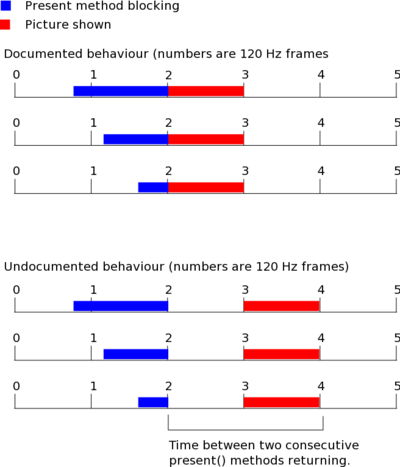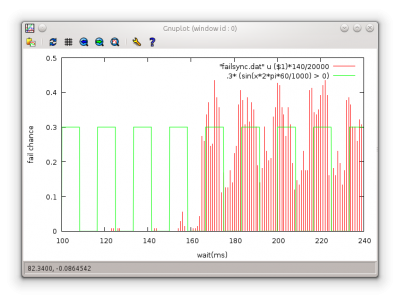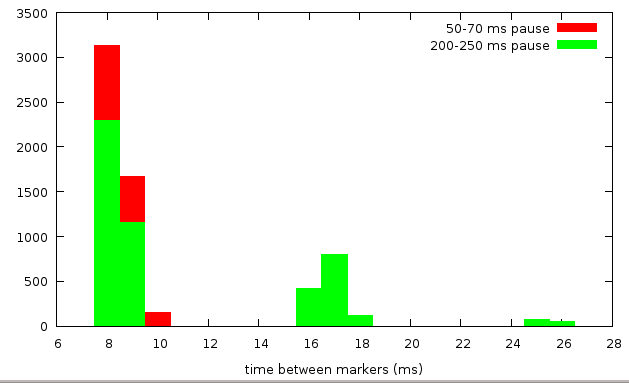Difference between revisions of "Neurobs Presentation"
| Line 27: | Line 27: | ||
[[File:Failsync2.png|none|Difference of arrival times of two consecutive markers (no red bars are hidden)]] | [[File:Failsync2.png|none|Difference of arrival times of two consecutive markers (no red bars are hidden)]] | ||
| − | ==References== | + | <!--==References== |
| − | <references/> | + | <references/>--> |
Latest revision as of 11:36, 18 January 2016
This page documents some bugs we encountered in Presentation. Users should go to the Presentation page.
Screen synchronization issue on 120 Hz screens
There is a serious synchronization issue where the picture.present() method returns one frame too early. It can be detected by measuring the time between two consecutive present() calls returning:
wait_interval(220); picture1.present(); int t0 = clock.time(); picture2.present(); int t1 = clock.time(); int dt = t1-t0;
One would expect picture1 to be shown for 1 frame (1/120 s) and time dt to show this. Sometimes this is not the case. The image will be shown for one frame (1/120 s), but dt will be 2/120 s:
The fact that picture1 is shown for only 1/120 s was confirmed with a light sensor connected to an oscilloscope.
The chance of this issue occurring is highly dependent on the waiting time prior to the first present() call:
Neurobs people seem to think it has something to do with triple buffering, but the graph above was created without triple buffering enabled.


